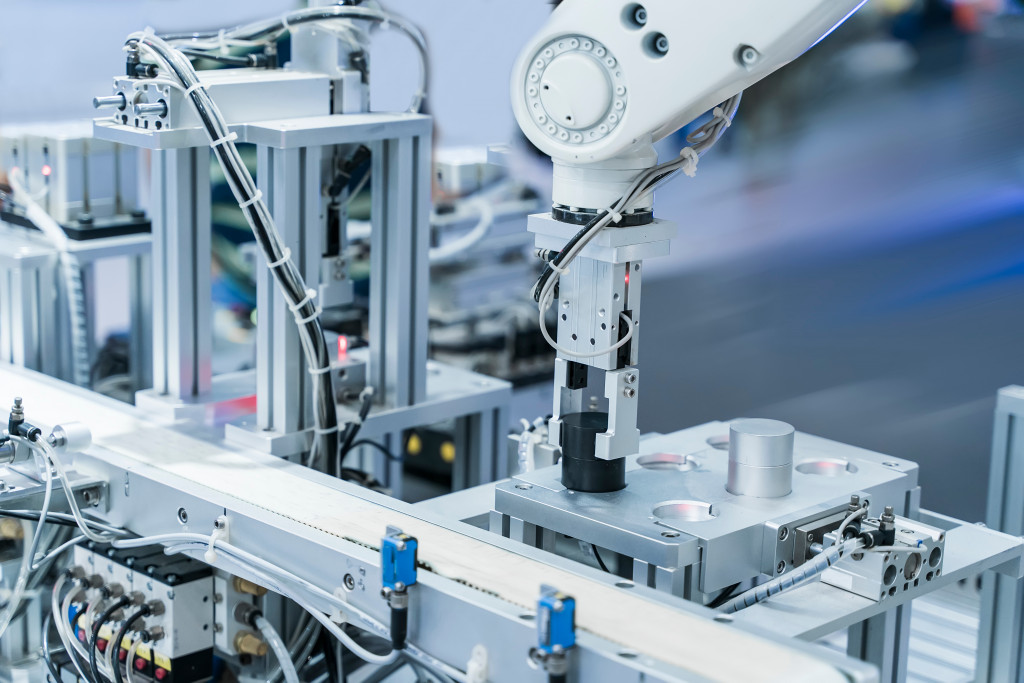The term “smart factory” might conjure up images of robots building cars or other products on an assembly line. But there’s a lot more to it than that. The smart factory concept has been around for quite a while, and it’s only now starting to become a reality thanks to advances in technology and IoT. Here are five technologies that are making smart factories possible.
Big data and Analytics
Collecting data is one thing, but making sense of it is another. That’s where big data and analytics come in. With the right tools, manufacturers can collect vast amounts of data from their machines and then use that data to improve their processes. For example, manufacturers can identify bottlenecks and inefficiencies in their production lines by analyzing data on machine usage and downtime. Here are three ways smart factories analyze data and make decisions.
Improved RAM
RAM is known as a computer’s “working memory.” It’s responsible for analyzing various inputs made by machines in a smart factory, and an improved RAM for industrial applications is essential for every functioning smart factory. An improved RAM allows for faster processing of large amounts of data, improved response time in machine controls, and smoother operation overall. This leads to better-decentralized decisions that give automatons the autonomy they need to manufacture products efficiently.
Cloud computing
Cloud computing allows for improved communication and collaboration between the factory and outside partners and customers. It also allows for easy storage and accessibility of data from any location, making it easier to analyze and use that data to make decisions about the production process.
Blockchain
Blockchain technology offers a secure and decentralized way to track products and their components throughout the supply chain, improving supply chain transparency. It can also be used to track production data and machine maintenance records, making it easier to analyze and improve processes.

Connected machines
In a traditional factory, each machine is an island unto itself. But in a smart factory, all machines are connected to a central network. This allows manufacturers to get real-time feedback on their machines’ performance and make changes on the fly if necessary. It also makes it easier to predict when Maintenance will be necessary and schedule it accordingly. One way machines are connected inside a factory is through IoT.
IoT
IoT, or the Internet of Things, refers to devices connected to the internet and can communicate with each other. These devices collect and transmit data, allowing manufacturers to gather real-time information about their production processes. With this data, they can make better-informed decisions and improve efficiencies in their operations.
3D printing
Factories used to wait for various parts to be made before making a particular product. Although 3D printing is often thought of as a way to create prototypes or one-off products, it can work in a manufacturing setting, especially for small-batch production runs or for creating customized products on demand. 3D printing can help manufacturers reduce inventory levels, speed up production times, and produce products using environmentally friendly materials. Here are the three benefits that 3D printing has given to smart factories.
Autonomous Process
3D printers often don’t need human intervention during the printing process, allowing for a more autonomous manufacturing process. This frees employees up for other tasks, improving efficiency and productivity.
On-demand production
3D printers can create parts on demand, eliminating the need for excess inventory and reducing waste. It also allows for greater customization of products, meeting customer demands in a more personalized way.
Sustainability
3D printing uses less material than traditional manufacturing methods, making it more sustainable and environmentally friendly. It also allows for the use of recycled or biodegradable materials in production.
Robotics
Robotics have been used in manufacturing for decades, but they’re becoming more advanced. Today’s industrial robots are more flexible and versatile than ever before, which means they can be used for tasks that were once considered too difficult or dangerous for humans to do. In addition, robotics are becoming more affordable, which means they’re within reach of even small businesses. Here are three benefits that robotics brings to smart factories.
Safety
Manufacturing can be a dangerous job, but robots can do tasks that pose a risk to human workers. This improves safety in the workplace and reduces injuries.
Precision
Robots can perform tasks with precision and repeatability, improving product quality and reducing waste.
Efficiency
Robots can work 24 hours a day without getting tired, allowing for increased production output and efficiency in the manufacturing process. They also require less training and supervision than human workers, freeing up employees for other tasks.
Smart factories are made possible by technological advances that allow machines to be connected and controlled remotely, big data to be collected and analyzed, and 3D printing to be used for small-batch production runs. As these technologies continue to evolve, we can expect even more innovations in manufacturing in the years to come.




